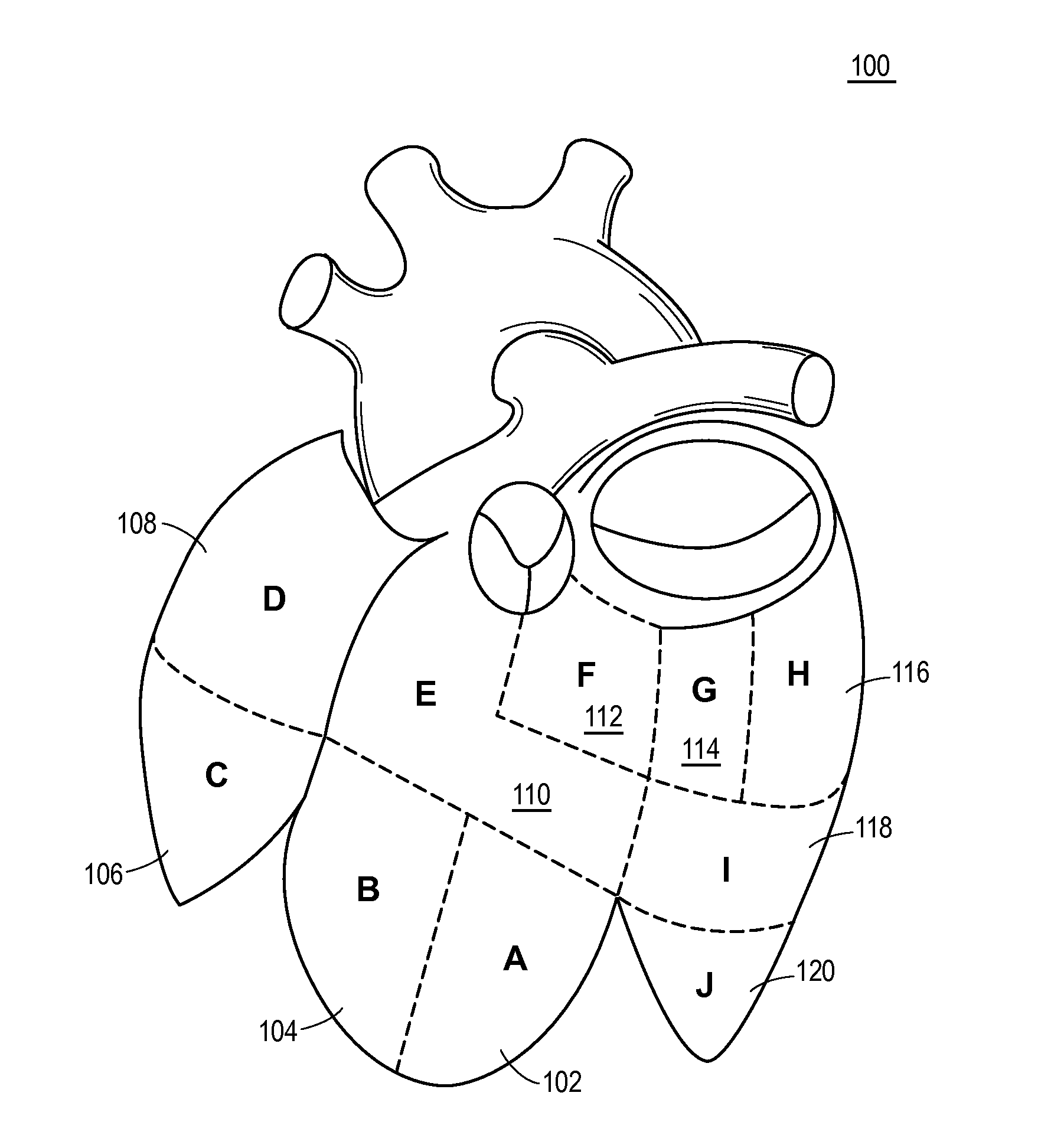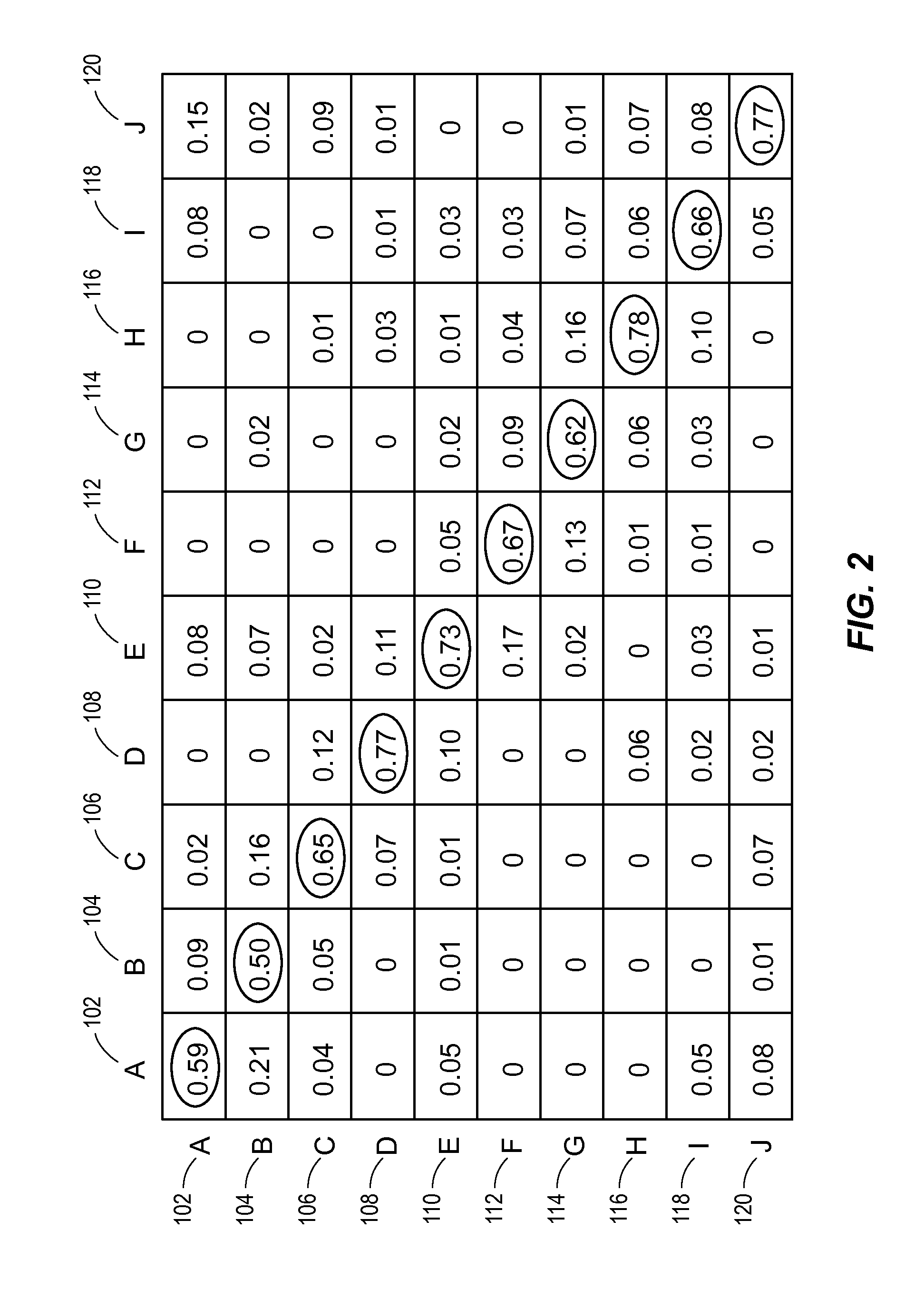Automated analysis of multi-lead electrocardiogram data to identify the exit sites of physiological conditions
a multi-lead electrocardiogram and analysis technology, applied in the field of automatic analysis of multi-lead electrocardiogram data, can solve the problems of heart muscle tissue damage or death (infarction), myocardium, life-threatening arrhythmias, etc., to improve the accuracy of vt exit site measurement, increase sensitivity and specificity, and enhance the effect of ecg determination
- Summary
- Abstract
- Description
- Claims
- Application Information
AI Technical Summary
Benefits of technology
Problems solved by technology
Method used
Image
Examples
example
Table 1
[0021]Table 1 provides characteristics of the 34 patients examined in an example study for training data purposes. Mapping and radiofrequency ablation were performed in a consecutive series of 34 patients (31 males, age: 68±9 years, ejection fraction: 0.25±0.12) with post-infarction VT. Left ventricular pace-mapping was performed in these patients. Eighteen patients (53%) had a prior inferior, 9 (26%) had an anterior and 7 (21%) had an inferior and anterior wall myocardial infarction. Pace-maps were collected in these patients and used as training data. The training data were subsequently (see below) validated in another 33 consecutive post-infarction patients (32 males, age 67±10 years, ejection fraction: 0.26±0.12).
TABLE 1Characteristics of Patients used for Training and Validation of DataValidationVariableTraining datadatap-valuePatients, n3433Induced VTs, n8 ± 48 ± 50.71Age, years68 ± 9 67 ± 100.63Male / female, n31 / 332 / 10.61Left ventricular ejection ...
PUM
 Login to View More
Login to View More Abstract
Description
Claims
Application Information
 Login to View More
Login to View More - R&D
- Intellectual Property
- Life Sciences
- Materials
- Tech Scout
- Unparalleled Data Quality
- Higher Quality Content
- 60% Fewer Hallucinations
Browse by: Latest US Patents, China's latest patents, Technical Efficacy Thesaurus, Application Domain, Technology Topic, Popular Technical Reports.
© 2025 PatSnap. All rights reserved.Legal|Privacy policy|Modern Slavery Act Transparency Statement|Sitemap|About US| Contact US: help@patsnap.com



